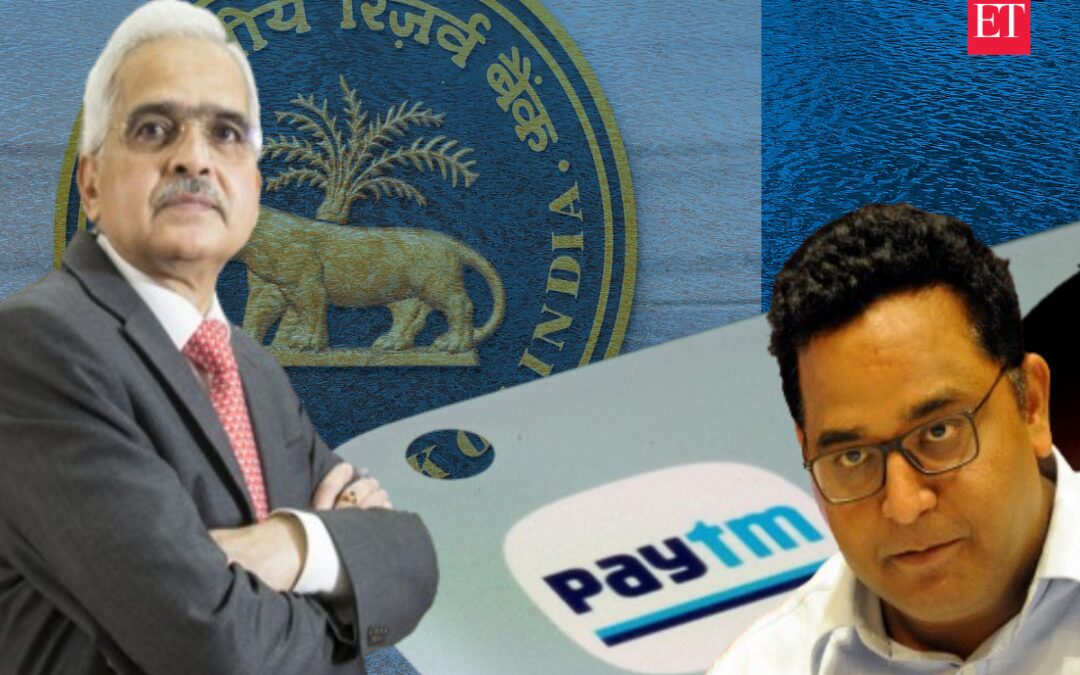In highly volatile times when even the US and Europe have seen several banks cave under heaps of troubles including loose regulatory compliance, the Reserve Bank of India (RBI) is wide awake and watching the sector closely. It might seem so but hammering down on Paytm is not an exception. It’s part of the RBI’s highly kinetic disciplining witnessed in the recent past. The message coming from the RBI is: the disciplinary action against Paytm could be unprecedented for the financial services industry, but it is all in keeping with the RBI’s regulatory processes.
At the post-monetary policy press conference today, RBI Governor Shaktikanta Das dispelled the impression that its action on Paytm was something unusual. While refusing to speak solely on the Paytm case, he made it amply clear to one and all that the central bank will never be found sleeping on the job. It will be considerate, communicative and patient but strike at regulatory breaches if not plugged in time. And that’s how it has been well before its recent action on Paytm.
How RBI has been cracking the whip
Paytm is one in a series of RBI actions in the recent past when it struck down on an entity that was found stepping over the line.
In 2020, the RBI told HDFC Bank to temporarily stop all digital launches and sourcing of new credit card customers. The action came after the bank suffered its third big outage in the span of just two years. The RBI order also stated that the lender’s board needs to examine these lapses and fix accountability.
The interruption in digital services on November 21 happened due to a power failure in the primary data centre of the bank. The regulator had sought details behind the data centre outage that meant services on the Unified Payments Interface, ATMs and card channels were unavailable for several hours.
In December 2019, the RBI had said a team of experts was examining the breakdown of HDFC Bank’s digital banking channels that occurred early that month, causing millions of customers to be locked out of their net and mobile banking accounts for over 48 hours. The outage was due to “increased payday transactional activities”. While the findings of those investigations were not made public, then HDFC Bank executive director Sashidhar Jagdishan had publicly refuted the possibility of any external attack.
In November last year, the RBI directed Bajaj Finance Limited to stop the sanction and disbursal of loans under two of its lending products – ‘eCOM’ and ‘Insta EMI Card’ with immediate effect as the non-banking financial company did not comply with certain norms.
“This action is necessitated due to non-adherence of the company to the extant provisions of Digital lending guidelines of Reserve Bank of India, particularly non-issuance of Key Fact Statements to the borrowers under these two lending products and the deficiencies in the Key Fact Statements issued in respect of other digital loans sanctioned by the company,” the central bank had said.
In October last year, the RBI banned public sector Bank of Baroda from onboarding any new customers onto its ‘bob World’ mobile application with immediate effect.
The central bank’s action came three months after a news network reported how the bank linked accounts to unregistered mobile numbers and signed up these numbers to the application. Even though customers were deregistered after they signed up, it led to an artificial increase in the number of downloads and sign-ups. The bank had denied the allegations.
The RBI action on BoB forced other lenders to relook at their digitisation processes, plug loopholes, and monitor employees to prevent any untoward incidents. “The message from the regulator is clear…be it a large or small bank, public sector or private sector, there should be accountability,” a senior public sector bank executive had told ET at that time.
In November last year, the RBI asked banks and NBFCs to increase the risk weights with respect to consumer credit exposure of commercial banks by 25 per cent to 125 per cent, merely a month after flagging the high growth in certain components of consumer credit and asking NBFCS and banks to strengthen internal surveillance mechanisms.
Risk weights mean the amount of capital lenders have to keep aside to cover credit risk from a particular loan segment. The higher a risk weightage, the more amount of capital needed to be set aside by lenders for the loans, which means less amount available to lend. The growth in retail loans, especially unsecured ones at 25% plus, and increased lending to NBFCs at 30% prompted the RBI’s intervention.
Making an example out of Paytm?
The sledgehammer action against Paytm may seem the central bank is trying to make an example out of Paytm so others in the industry remain careful. But RBI Governor Das clarified today that for the RBI Paytm is just another case. Even before Paytm action, the RBI had an unflinching gaze on the financial sector and did not hesitate from cracking the whip. The Paytm incident has sent a message that any signs of stress or breach will invite the RBI glare and if things aren’t mended in time, the hammer will fall.
Das said today at the post-monetary policy conference that the RBI will come out with FAQs on the Paytm case next week considering high interest in the case in various quarters. But Das made it clear that the RBI was just following its processes.
Das encapsulated the RBI’s approach thus: the emphasis is on bilateral engagement with entities for nudging them to corrective actions for which sufficient time is given. When such constructive engagement doesn’t work, or when the entity doesn’t take effective action, the RBI goes for imposing supervisory or regulatory restrictions. Such restrictions are always proportionate to the gravity of the situation. All actions of the RBI, it being a responsible regulator, are in the best interest of systematic stability and for protection of depositor and customer interests. These interests can’t be compromised and entities should be watchful of these interests for their own long-term success.
Das also dispelled the apprehensions that the RBI’s stringent action will quell innovation and technological advances in the financial sector. “Let there be no doubt about the central bank’s commitment to promote technology and innovation in the financial sector,” he said.










